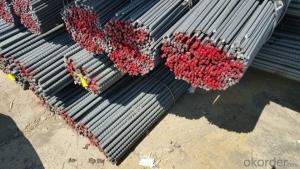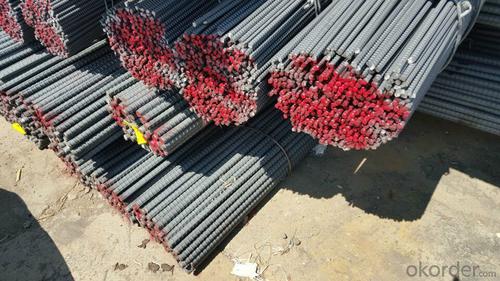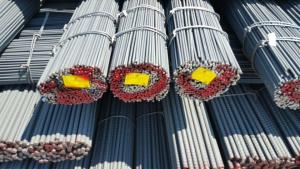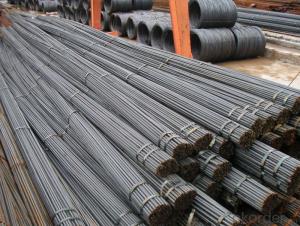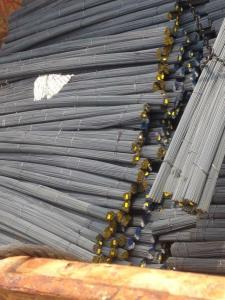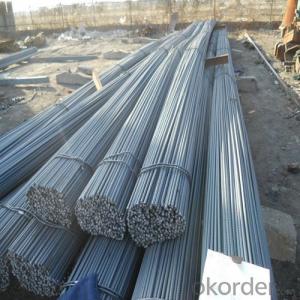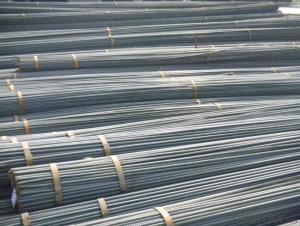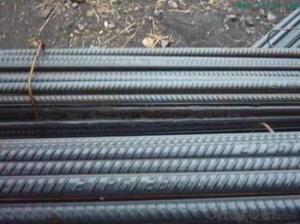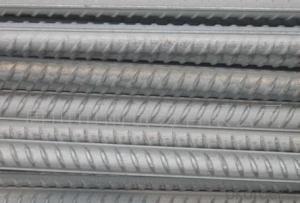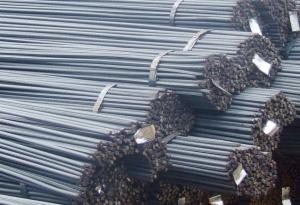HRB400 Deformed Steel Bar,Reinforced Deformed Steel Bar
- Loading Port:
- Tianjin
- Payment Terms:
- TT OR LC
- Min Order Qty:
- 30 m.t.
- Supply Capability:
- 100000 m.t./month
OKorder Service Pledge
OKorder Financial Service
You Might Also Like
Specification
Product Description:
Specifications of HRB400 Deformed Steel Bar,Reinforced Deformed Steel Bar
Standard | GB | HRB400 | |
Diameter | 6mm,8mm,10mm,12mm,14mm,16mm,18mm,20mm, 22mm,25mm,28mm,32mm,36mm,40mm,50mm | ||
Length | 6M, 9M,12M or as required | ||
Place of origin | Hebei, China mainland | ||
Advantages | exact size, regular package, chemical and mechanical properties are stable. | ||
Type | Hot rolled deformed steel bar | ||
Chemical Composition of HRB400 Deformed Steel Bar,Reinforced Deformed Steel Bar
Grade | Technical data of the original chemical composition (%) | ||||||
C | Mn | Si | S | P | V | ||
HRB400 | ≤0.25 | ≤1.60 | ≤0.80 | ≤0.045 | ≤0.045 | 0.04-0.12 | |
Physical capability | |||||||
Yield Strength (N/cm²) | Tensile Strength (N/cm²) | Elongation (%) | |||||
≥400 | ≥570 | ≥14 | |||||
Usage and Applications of HRB400 Deformed Steel Bar,Reinforced Deformed Steel Bar
Deformed bar is widely used in buildings, bridges, roads and other engineering construction. Big to highways, railways, bridges, culverts, tunnels, public facilities such as flood control, dam, small to housing construction, beam, column, wall and the foundation of the plate, deformed bar is an integral structure material. With the development of world economy and the vigorous development of infrastructure construction, real estate, the demand for deformed bar will be larger and larger..
Packaging & Delivery of HRB400 Deformed Steel Bar,Reinforced Deformed Steel Bar
Packaging Detail: products are packed in bundle and then shipped by container or bulk vessel, deformed bar is usually naked strapping delivery, when storing, please pay attention to moisture proof. The performance of rust will produce adverse effect.
Each bundle weight: 2-3MT, or as required
Payment term: TT or L/C
Delivery Detail: within 45 days after received advanced payment or LC.
Label: to be specified by customer, generally, each bundle has 1-2 labels
Trade terms: FOB, CFR, CIF
Images of HRB400 Deformed Steel Bar,Reinforced Deformed Steel Bar
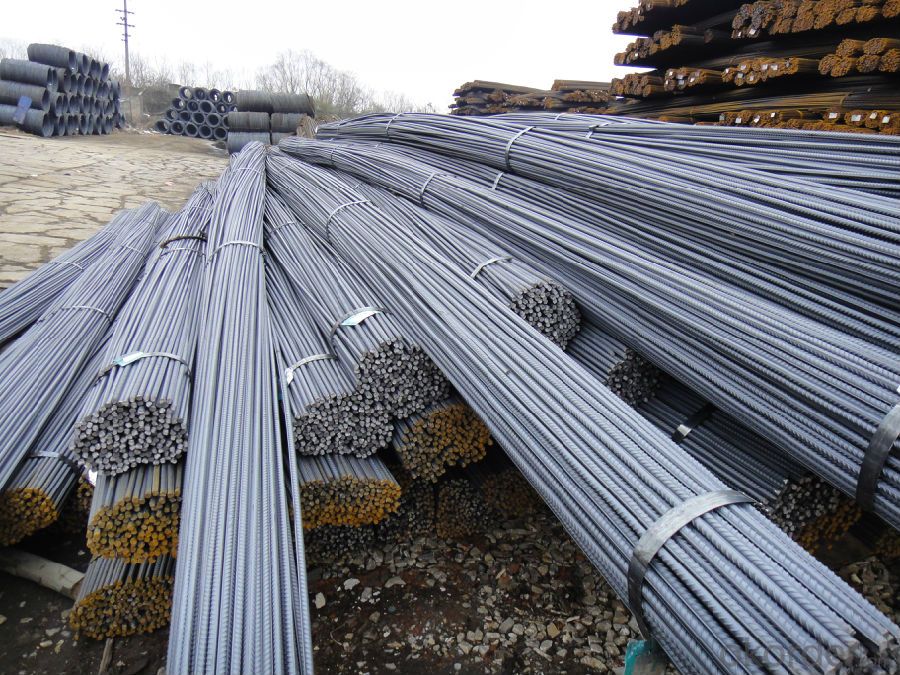
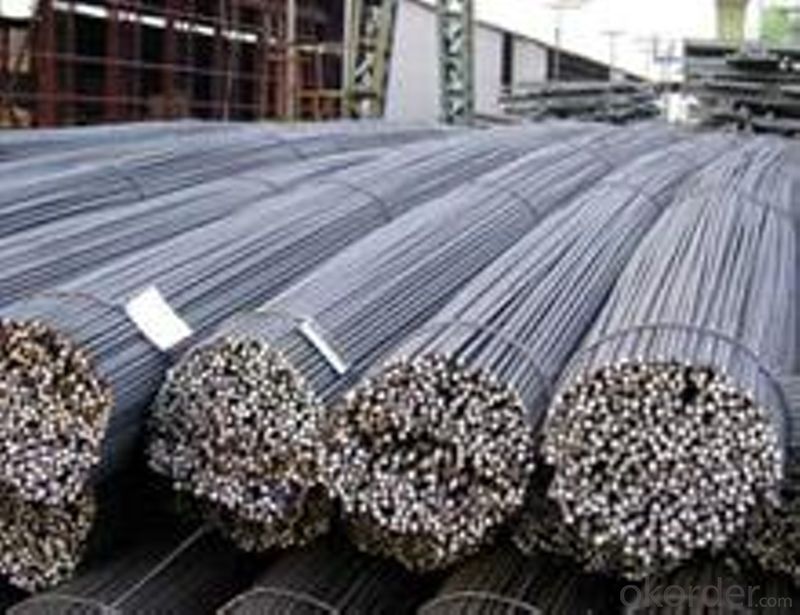
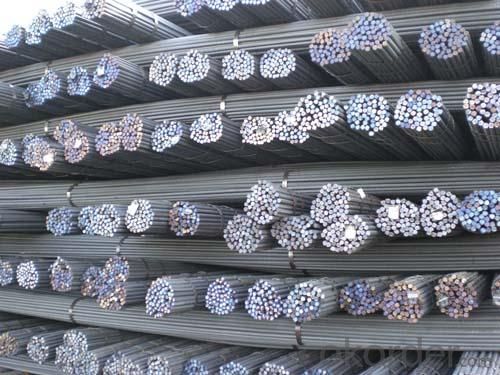
- Q: How do steel rebars affect the bond strength between concrete and reinforcement?
- Steel rebars play a crucial role in enhancing the bond strength between concrete and reinforcement. The presence of rebars in concrete structures creates a mechanical interlock between the two materials, resulting in a stronger and more durable bond. Firstly, rebars provide a larger surface area for the concrete to adhere to. The rough texture of the steel surface allows the fresh concrete to bond effectively, creating a strong bond. This increased surface area also helps to distribute loads more evenly, reducing stress concentrations and enhancing the overall structural integrity of the concrete. Secondly, rebars act as a load transfer medium, transmitting forces between the concrete and reinforcement. As the concrete experiences tensile forces, which it is inherently weak in resisting, the rebars bear these forces and effectively carry them across the concrete-rebar interface. This prevents cracks from propagating and helps to maintain the overall stability and strength of the structure. Moreover, the presence of rebars helps to control cracking in concrete. As the concrete undergoes shrinkage or temperature variations, it tends to crack. However, with the presence of rebars, these cracks are restricted or minimized. The rebars act as reinforcement, holding the concrete together and preventing crack propagation. Additionally, steel rebars improve the bond strength by providing anchorage. The embedment of rebars into the concrete creates a mechanical connection, preventing the rebar from slipping or pulling out. This anchorage ensures that the bond between the concrete and reinforcement remains intact, even under high loads or external forces. In summary, steel rebars significantly enhance the bond strength between concrete and reinforcement. They provide a larger surface area for adhesion, act as load transfer mediums, control cracking, and offer anchorage, ensuring a stronger and more durable bond. Their presence contributes to the overall stability and longevity of concrete structures.
- Q: How are steel rebars inspected for quality on construction sites?
- In construction projects, steel rebars play a critical role by providing reinforcement and strength to concrete structures. It is crucial to ensure the quality of steel rebars in order to guarantee the safety and durability of the overall construction. To inspect the quality of steel rebars on construction sites, various methods are commonly used. The first and most basic method of quality inspection is visual examination. This involves visually inspecting the rebars for any visible defects such as cracks, deformations, rust, or surface irregularities. Any rebars with such flaws are immediately identified and rejected. Another method involves measuring and checking the dimensions of the rebars. Inspection personnel use measuring tools like calipers or tape measures to verify the length, diameter, and other dimensions of the rebars. Any deviation from the specified tolerances may result in rejection. Magnetic Particle Testing (MPT) is a non-destructive testing method that is commonly employed to detect surface and near-surface defects in steel rebars. In this technique, the rebar is magnetized and ferromagnetic particles are applied, which accumulate at any surface defects or cracks. Trained inspectors carefully examine the surface to identify any areas of concern. Ultrasonic Testing (UT) is another non-destructive testing method used for inspecting rebars. It involves transmitting ultrasonic waves through the rebar. These waves reflect back differently when they encounter defects like voids, cracks, or inclusions. Trained technicians analyze the reflected waves to identify and assess the quality of the rebars. Tensile Testing is carried out to determine the tensile strength of the rebars, which is crucial in assessing their quality. A sample rebar is pulled until it breaks, and the force required to do so is measured. This test helps determine the strength and ductility of the rebar, ensuring it meets the required standards. Chemical analysis is often conducted on steel rebars to ensure they meet the specified composition requirements. Samples are collected from the rebars, and various tests are performed to determine the chemical composition, including carbon, manganese, and other alloying elements. This analysis helps ensure that the rebars possess the necessary properties for the intended application. These inspection methods are typically carried out by qualified and experienced personnel, such as certified welding inspectors or quality control technicians. By implementing these quality inspection procedures, construction sites can ensure that the steel rebars used in their projects meet the required standards, thereby ensuring the safety and longevity of the structures being constructed.
- Q: What are the common applications of steel rebars in construction?
- Steel rebars are commonly used in construction for reinforcing concrete structures such as buildings, bridges, and highways. They provide strength and stability to the concrete, enhancing its load-bearing capacity and resistance to tension and bending forces. Additionally, steel rebars help prevent cracks and structural failures in the concrete, ensuring the longevity and durability of the construction project.
- Q: Are there any specific safety measures to be taken while working with steel rebars?
- Yes, there are several specific safety measures to be taken while working with steel rebars. These include wearing appropriate personal protective equipment such as gloves, safety glasses, and steel-toed boots to protect against cuts, eye injuries, and foot injuries. It is also important to ensure that the work area is well-lit and free from tripping hazards. Workers should be trained in proper handling techniques to avoid strains and sprains, and should never carry or drag rebars by hand. Additionally, it is crucial to use the correct tools for cutting and bending rebars and to follow safe lifting practices to prevent back injuries. Regular inspections of the rebars for damage or defects should also be conducted to maintain a safe working environment.
- Q: What is the difference between three - grade steel and other grades?
- Because of the difference of chemical composition and ultimate strength of steel bars, they are different in toughness, cold bending, fatigue resistance and so on.
- Q: How are steel rebars connected together in construction?
- Steel rebars are typically connected together in construction through a process called rebar splicing. This involves overlapping the rebars and securing them with wire or using mechanical couplers to join the rebars together.
- Q: How do steel rebars prevent cracks in concrete?
- The reinforcement provided by steel rebars is essential for preventing cracks in concrete. These rebars increase the tensile strength of the concrete, which is weak in tension. While concrete can withstand compressive forces, it is susceptible to cracking when subjected to tension or pulling forces. When steel rebars are embedded in concrete, they function as a framework or skeleton that distributes the tensile forces evenly throughout the structure. As a result, the rebars absorb the tension, effectively preventing the concrete from cracking or failing under the applied load. In addition to absorbing tension, the rebars also control the size and width of any cracks that may occur. By confining the cracks to a limited area surrounding the rebars, they prevent the cracks from spreading throughout the entire concrete structure. Furthermore, the presence of rebars can even help prevent cracks from forming in the first place, as they reinforce the concrete and improve its overall durability. To summarize, steel rebars play a critical role in preventing cracks in concrete by increasing its tensile strength, absorbing tension, and controlling crack propagation. This reinforcement is vital in ensuring the structural integrity and longevity of concrete structures, effectively preventing potential failures and ensuring their safety.
- Q: How do steel rebars contribute to the overall sustainability of a structure?
- Steel rebars contribute to the overall sustainability of a structure in several ways. First, they enhance the durability and strength of the building, allowing it to withstand various loads and environmental conditions for a longer lifespan. This reduces the need for frequent repairs or replacements, thereby conserving resources and reducing waste. Additionally, steel rebars are made from recycled materials, reducing the demand for raw materials and the associated environmental impact. Moreover, the recyclability of steel makes it a sustainable choice, as it can be reused or repurposed at the end of the structure's life. Overall, steel rebars contribute to the sustainability of a structure by ensuring longevity, minimizing material consumption, and promoting recycling.
- Q: What are the advantages of using galvanized steel rebars?
- Using galvanized steel rebars in construction projects offers several advantages. Firstly, the rebars are protected by a zinc coating that prevents corrosion, ensuring their durability and longevity. Unlike traditional steel rebars that may rust, the zinc coating acts as a barrier against moisture and other corrosive elements, preserving the structure's integrity. Secondly, galvanized steel rebars have a high ratio of strength to weight. This means they are both lightweight and incredibly strong, making them ideal for reinforced concrete structures. Their strength allows for the use of thinner and lighter rebars, reducing the overall weight of the structure and increasing cost-effectiveness. Additionally, working with and installing galvanized steel rebars is easy. They can be cut, bent, and shaped to meet specific project requirements. This ease of handling enables faster construction, saving both time and money. Furthermore, galvanized steel rebars are fire-resistant. The zinc coating acts as a protective layer, preventing them from burning or sustaining damage from high temperatures. This fire resistance is crucial for ensuring the stability and safety of structures, particularly in fire-prone areas or where fire safety regulations are strict. Lastly, galvanized steel rebars are environmentally friendly. The zinc coating used in the galvanization process is non-toxic and recyclable. This means that at the end of their lifespan, galvanized steel rebars can be easily recycled and reused, minimizing waste and reducing their environmental impact. In conclusion, the advantages of galvanized steel rebars include corrosion resistance, a high strength-to-weight ratio, ease of installation, fire resistance, and environmental friendliness. These benefits make them a popular and trustworthy choice for reinforcing concrete structures in various construction projects.
- Q: Are there any environmental concerns related to the production of steel rebars?
- Yes, there are several environmental concerns related to the production of steel rebars. One major concern is the high carbon emissions associated with the steel production process, which contributes to climate change. Additionally, the extraction and processing of raw materials for steel rebars, such as iron ore and coal, can lead to deforestation, habitat destruction, and air and water pollution. Proper waste management and recycling of steel scrap are also important considerations to minimize the environmental impact of steel rebar production.
Send your message to us
HRB400 Deformed Steel Bar,Reinforced Deformed Steel Bar
- Loading Port:
- Tianjin
- Payment Terms:
- TT OR LC
- Min Order Qty:
- 30 m.t.
- Supply Capability:
- 100000 m.t./month
OKorder Service Pledge
OKorder Financial Service
Similar products
Hot products
Hot Searches
Related keywords


